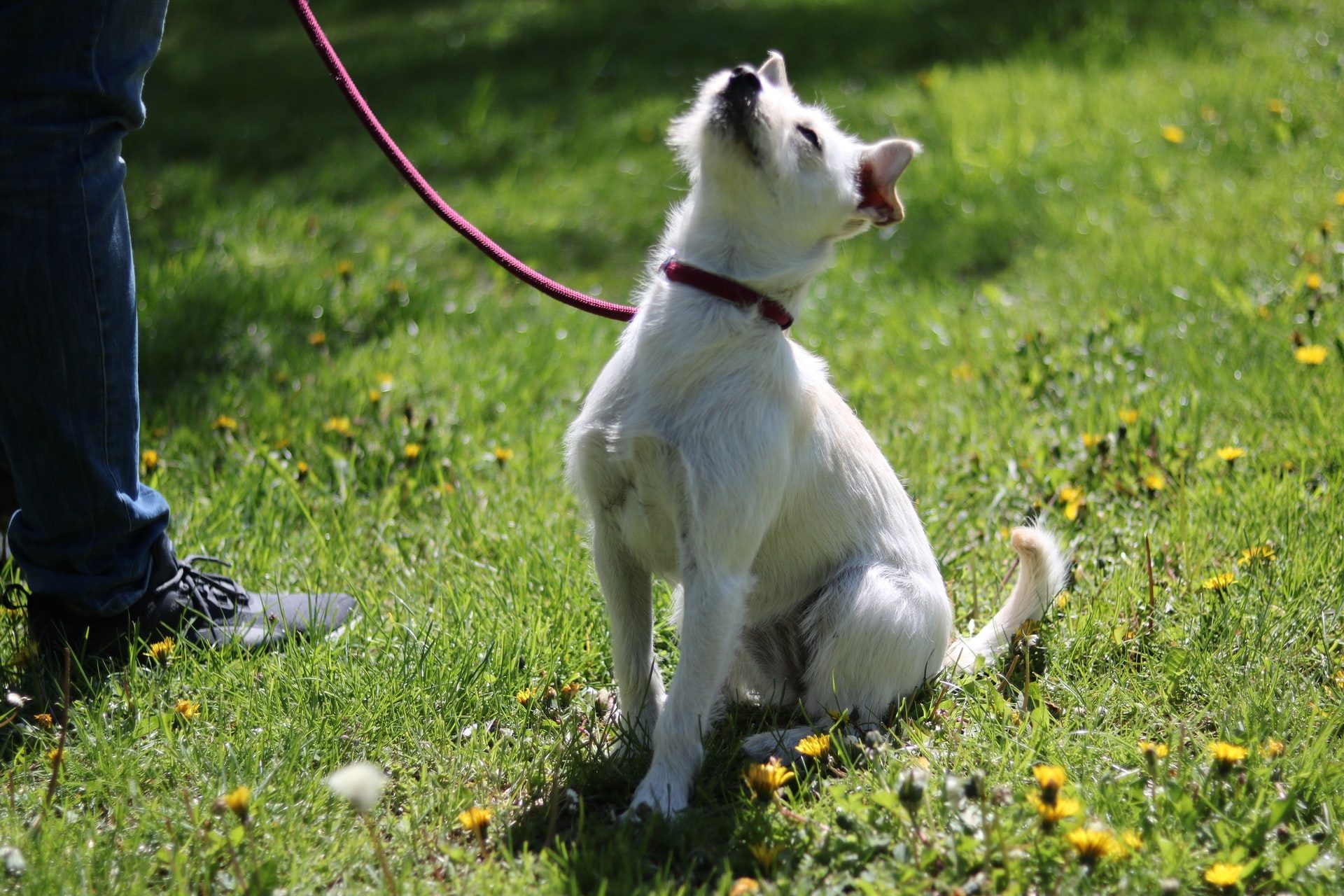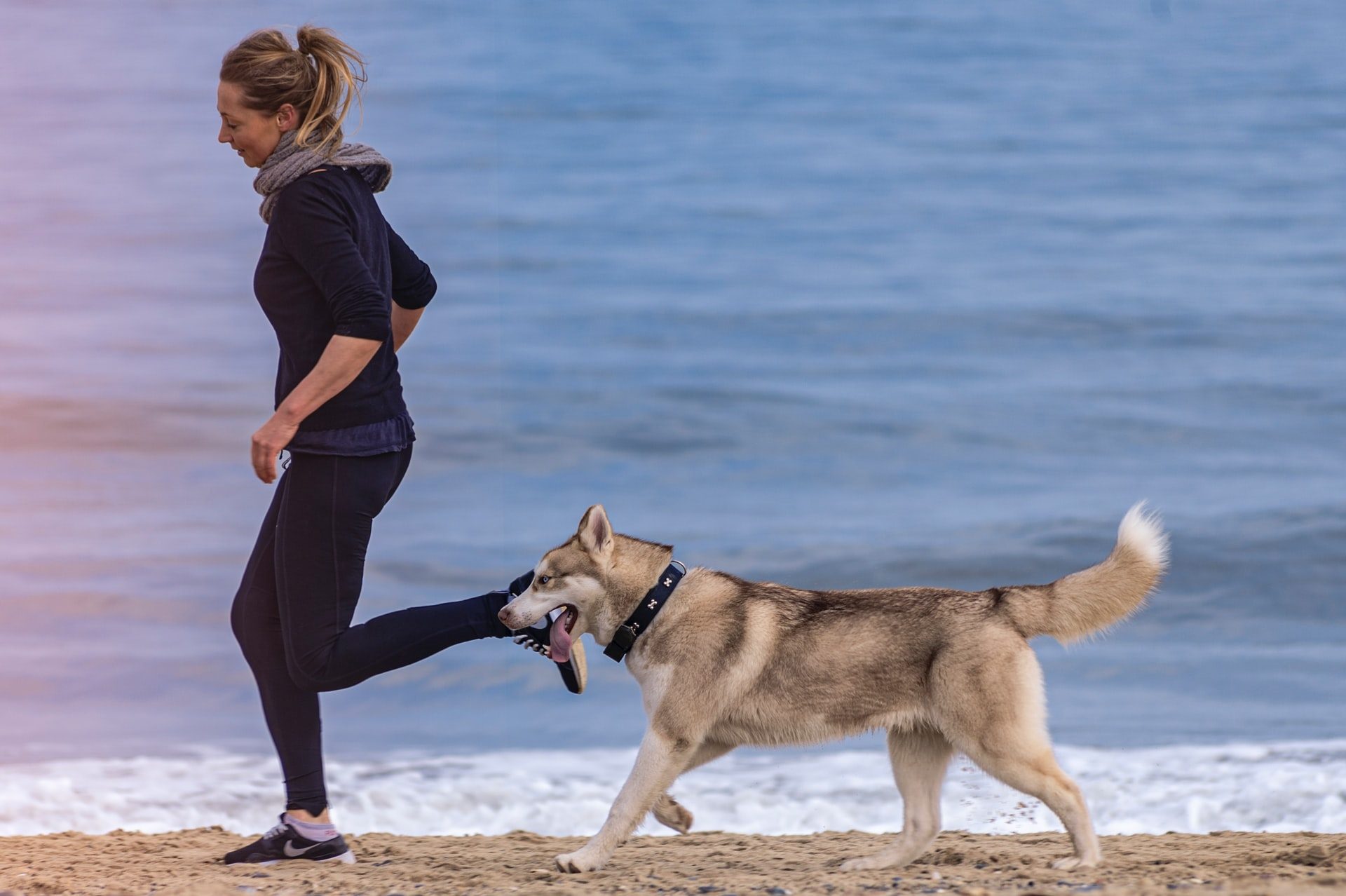Ears up, bright eyes, wagging tail … it’s clear your dog loves hanging out with you. In fact, scientists have discovered that just the scent of their favorite human triggers the reward center in the doggy brain.
Human relationship with canines dates back more than 30,000 years ago to the ice age when ancient hunter gatherers tamed wolves. Today, dogs think of us as family and are eager to please. Teaching them manners is a great way to strengthen that bond as well as keep them safe and happy.
In that spirit, here’s how to teach your dog these five basic commands.
Come
One of the first commands you’ll want to teach your dog is to come when you ask him to. More than just a convenience, obedience to this command could be life saving, especially when he’s faced with a potentially dangerous situation.
Here’s how:
- Begin inside by standing a few feet away from your dog.
- Get his attention by saying his name and then the word “come” or “come here.”
- As you give the command, clap your hands or slap your thigh to create excitement and encouragement.
- Reward your dog with a treat and/or praise when he responds.
- Repeat the process from different rooms, adding distractions as he progresses.
- Move outside once your dog is responding well inside. Continue adding distractions, rewarding him appropriately as he complies.
Sit
Teaching your dog to sit on command is a great way to prevent them from jumping up on people or dashing out the door when you open it for the delivery man.
Try this:
- Put a small treat in your hand and close your fist. Hold it close to your dog’s nose so he can smell it.
- Say the word “sit” firmly.
- Move your hand slowly from his nose to his forehead, which will likely cause him to drop his haunches as his gaze follows your hand.
- Reward him with the treat in your hand and lots of praise.
Repeat these steps several times until your dog understands the connection between your request and his reward. Over time, you’ll be able to remove the reward although they will always appreciate praise.
Lie down
This command is a useful way to teach your dog it’s time to settle down and relax in his surroundings. The first step is to make sure your dog knows how to sit. Once he has mastered that, he’s ready to learn how to lie down at your request:
- Let your dog watch you put a treat in your hand and ask him to sit.
- Move your hand close to his nose, then down to the floor, saying the word “down” as you lower your hand.
- Make sure he is lying completely on the ground before you reward him with the treat. If he pops back up or stays in a crouching position, withhold the treat until he is relaxed and lying on the ground.
Heel
Teaching your dog to heel is nothing more than teaching him how to walk beside you. It’s a great way to establish yourself as the leader of the pack and keep your dog’s attention focused on you during your daily walks.
Begin teaching inside using these steps:
- Start by putting your dog’s favorite toy or small treat in your hand and holding it close to your body on the side you want him to walk.
- Call your dog’s name and say the word “heel.”
- Hold the treat close to your body chest high so your dog walks close by your side.
- Encourage your dog to walk a few steps with you and then stop.
- Ask him to sit before you reward him.
- Repeat the process, gradually increasing the distance between stops.
- Vary your direction and pattern of walking so your dog understands he needs to pay attention.
- Continue the training outside until he heels at your command regardless of the distraction.
Stay
This might be a tough concept for your high-energy dog to understand, but with practice, he’ll get the hang of it. Again, make sure your dog sits on command before beginning this training.
- Begin inside and ask your dog to sit, standing a few feet in front of him.
- Once he obeys, hold out your arm with the palm of your hand facing toward your dog (as if to gesture “stop”) and say “stay.”
- Back up a few steps. If your dog continues to sit still, reward him with a small treat and lots of praise.
- Continue the process, gradually increasing the distance between you as he obeys your request.
Happiness, love, and safety are only a few of the reasons your dog needs to learn these five basic commands. Working together, you and your furry family member can have fun with a purpose that leads to a smarter, happier pet.




